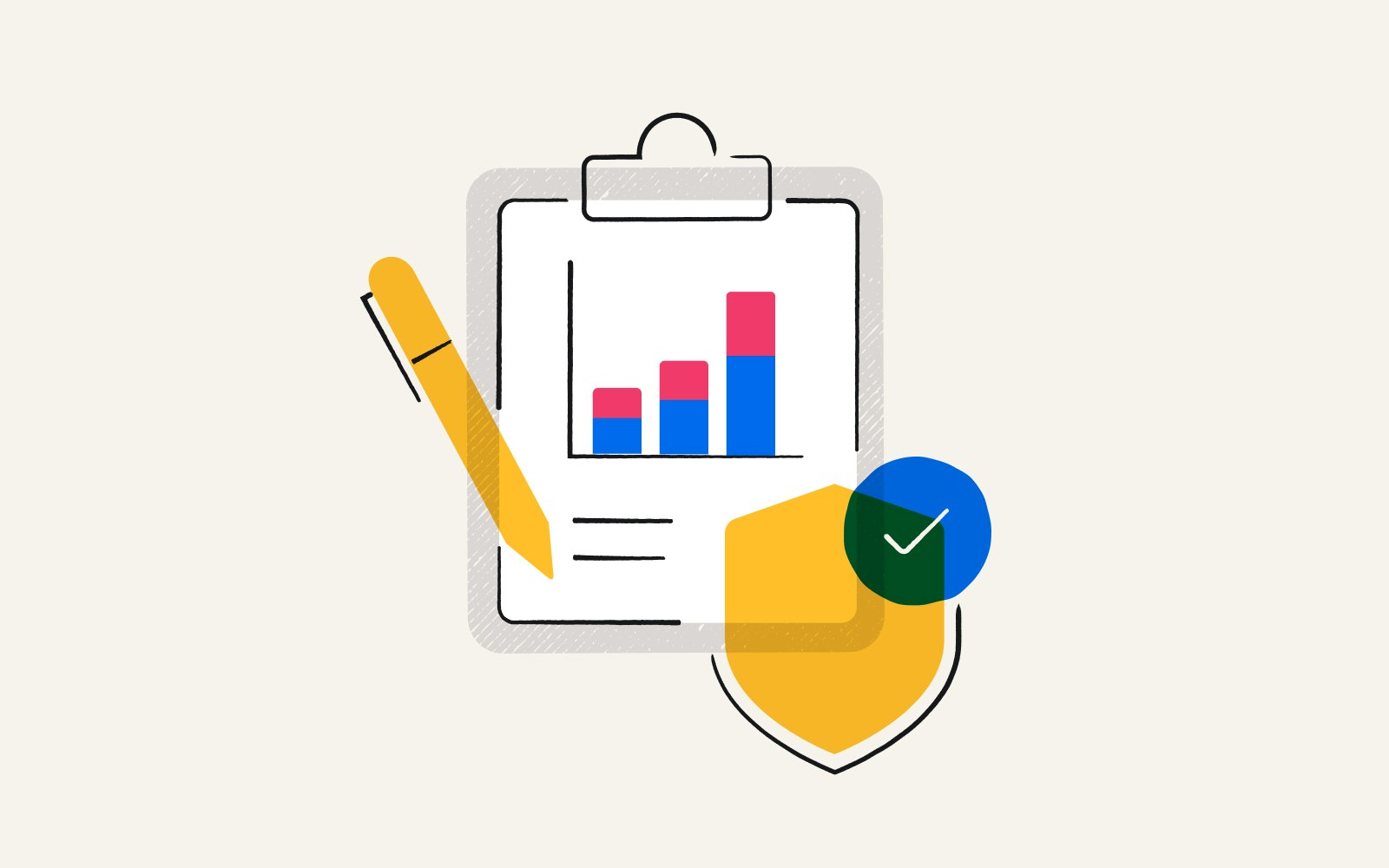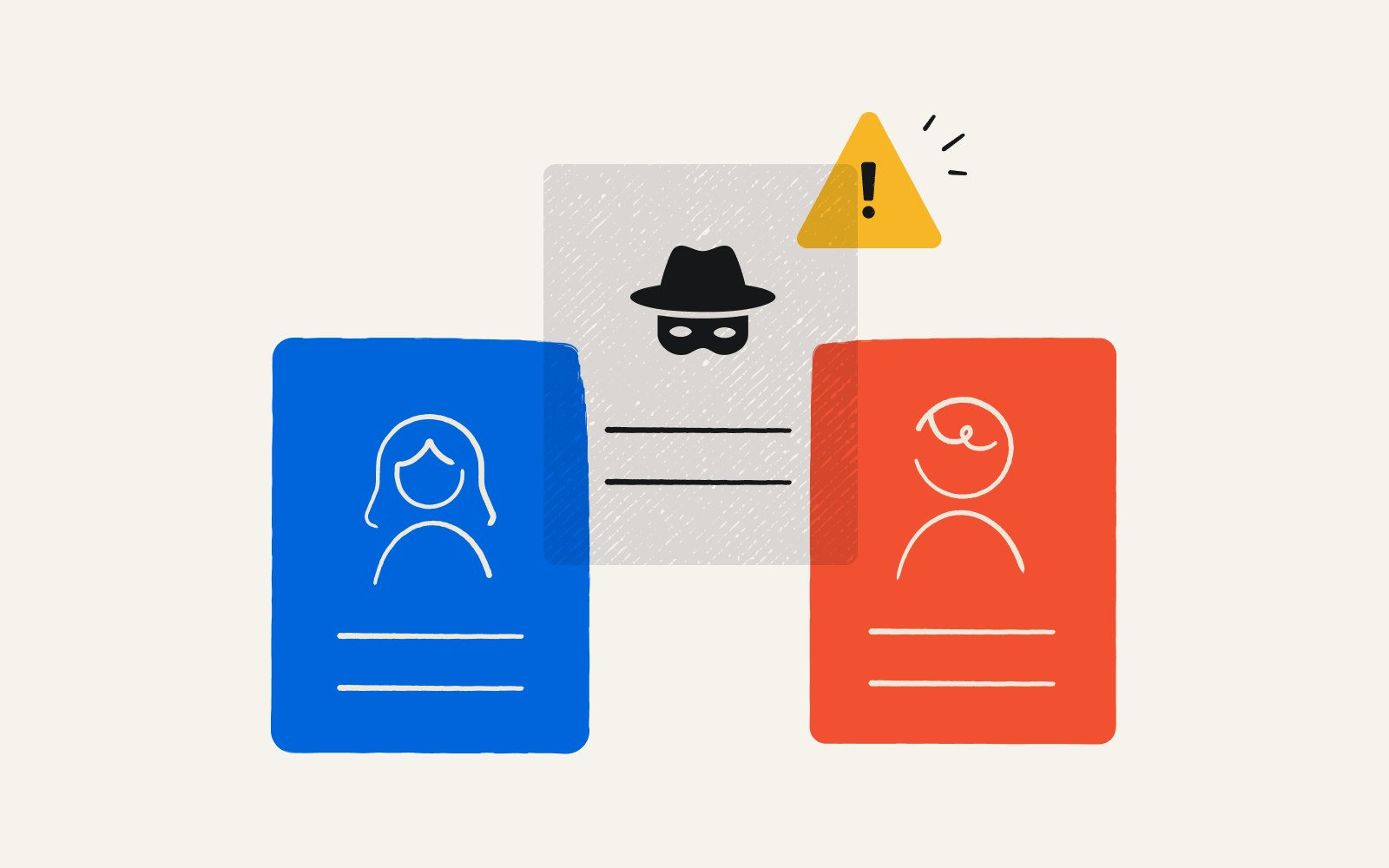Fraudsters cost the market research industry an estimated $350 million in 2024 — about 10% of total incentive spend across the industry. But fraud isn’t just a financial problem for research firms. Bad survey responses can compromise study findings, adding noise to legitimate responses. In worst-case scenarios, fraudulent responses can cause lasting reputational damage that leads to lost business.
The scale of AI-powered fraud is rising: 69% of all data quality flags in surveys are linked to various forms of fraud, with 41% coming from international hackers. Some scammers deploy advanced methods like device farms with hundreds of phones to create multiple fake identities. Others use AI tools to generate plausible-sounding responses that can be hard to detect.
The same AI tools that fraudsters use to game surveys can also be part of the solution for research teams to safeguard their studies.
So, what can market researchers do to combat fraud? In this article, we'll explore why it’s so important to keep fraud out of survey responses, common warning signs to watch for, and 7 practical ways to protect your market research data.
The impact of fraud on the quality of research data
Fraudulent responses do more than waste incentive budgets. They can also lead to costly business decisions based on bad data. When fake responses make up a significant portion of a dataset (which happens more often than you might think), it can become a major risk to data integrity.
Large research firms report average fraud-related losses of $25,000 annually, per our own analysis. But the true cost extends far beyond direct financial impact.
Cleaning up bad data can significantly eat up time, resources, and budget. “We often spend hours cleaning and reporting on data we believe is valid, only to find issues that force us to start over,” said John LaFrance, Vice President of Research Methods and Sampling Operations at Escalent. “The larger concern is that millions of dollars in incentives are being paid out to fraudsters during this process.”
Compromised data can erode the trust that an organization’s clients have in it and strain long-term relationships. Word travels fast in industry circles, and firms that have fallen victim to fraud may face increased skepticism during high-stakes meetings.
“We used to see 10%–15% questionable data, but now it’s closer to 30–40%,” said Mary, a VP at EMI Research Solutions. “The problem has grown significantly.”
Common signs of fraud in research responses
Fraudsters often rush through surveys without reading the questions carefully. There are several clear warning signs that can help you identify potentially fraudulent responses. Some of the most common include:
Straight-lining through grid questions
Providing nonsensical open-ended responses that don’t relate to the question
Reused credentials across multiple submissions, including duplicate email addresses, usernames, or passwords between supposedly different participants
Fabricated demographic information that appears convincing but doesn't hold up to verification against contact details and professional credentials
Suspicious geographic patterns, such as multiple responses from the same IP address or location, which may indicate a device farm operation
Unusual response timing patterns, like surveys completed much faster than average or batches of submissions happening simultaneously
Inconsistent answers between related questions, where respondents contradict their earlier responses when asked similar questions in different ways
Excessive selection of multiple answer options beyond what’s reasonable or intended
Answers that stand out as very different or extreme compared to the rest of the data set
Failure of fraud detection tests, like answering a honeypot question invisible to humans but detectable to bots in the JavaScript, or image-based fraud detection checks
What you should know about AI and deepfakes
What’s a deepfake? A deepfake is an image, video, or audio that's been generated or edited using AI to look like a real person. Scammers often use deepfakes to con victims out of money and sensitive information.
Business leaders and their employees are especially susceptible to these sophisticated, AI-powered scammers. In one alarming case, scammers defrauded an employee at a multinational firm of $25 million by using AI-generated deepfakes of the company’s Chief Financial Officer telling him to authorize the large transaction.
Over 25% of executives reported at least one deepfake incident in the past 12 months and more than half (51.6%) believe they will encounter a deepfake attack within the next year.
Deloitte
How to spot deepfake threats in market research
Deepfakes are a growing concern for market researchers, especially in panel-based and qualitative studies.
Look for:
Artificial voice signatures: Synthetic voices often sound monotone with unnatural intonations, lacking normal filler words and hesitations. Even advanced AI may struggle with real-time tone shifts.
Manipulated videos: Watch for odd eye movements, stiff expressions, or lips that don't sync properly with speech during video interviews.
Fake headshots: Check for inconsistent lighting, unreadable text or logos, and unusually blurry backgrounds. Cross-reference photos with LinkedIn profiles to verify they match and show genuine human activity.
Most of all, practice detecting AI-generated images. You might be surprised at how realistic some AI-generated images can look. In one original study from 2023, respondents accurately detected deepfakes about 60% of the time.
Sites like Northwestern University’s Detect Fakes give you plenty of practice studying AI-generated vs. real images. You can also use tools like Resemble AI, which both produces and detects AI-generated voices, and Deepware, which scans and detects AI-generated videos.
Our research shows that 11% of research firms are using image and video analysis for visual data. But a combination of your trained human eye and AI-powered deepfake detection is your best bet to spot synthetic media.
How to protect your data from fraudsters
To prevent and combat fraud, you’ll need a multilayered approach. The truth is, there’s no single solution that can fend off every type of fraud and fraudster out there.
Worse, today’s scammers use increasingly sophisticated methods to fly through basic fraud screening tools. Your prevention strategy must evolve as quickly as the fraudsters’ methods do if you want to stay ahead of new threats.
Here are seven proven strategies that can help your firm keep fraudsters at bay:
1. Use multilayered identity verification techniques
When you’re building a pool of participants, use more than one technique to verify each person’s identity. The strongest authentication combines digital identity verification tools with human oversight. Yes, it takes more time upfront, but the decreased risk of disaster is worth the extra elbow grease.
Here’s what you can do:
Cross-reference your participants' credentials across multiple data points. Validate emails, phone numbers, and professional credentials against trusted databases like National Change of Address (NCOA) and LexisNexis Risk Solutions.
Request video verification or even live interviews for high-stakes research. This creates friction that deters most fraudsters from continuing with their scams. At the same time, it helps ensure the quality of your participants. Video calls allow you to verify visual cues and natural responses that bots and professional fraudsters struggle to fake.
Use technologies like digital fingerprinting, SIM/browser extension tracking, IP tracking, and proxy/bot detection.
Consider using third-party identity verification services for specialized audience research. While these services add extra costs to your research, they provide valuable, thorough background checks that are difficult to bypass.
Take extra steps where you can. For B2B research, for example, you can verify professional roles and industry experience by screening company email domains, LinkedIn profiles, and trade association rosters. Cross-reference your respondents' titles and companies against recent databases to spot outdated or falsified credentials.
We’ve used digital fingerprinting forever at the company. We’ve also recently partnered with a biometric company. It allows for facial recognition to validate identity.
Amanda Keller-Grill
Senior Vice President of Global Innovation and Product Strategy from InnovateMR
2. Send single-use survey links
One of the easiest ways to prevent multiple submissions from one respondent is to generate unique, single-use URLs for each participant. Add a time-based expiration to the codes to make it even harder to reuse them.
You can also:
Track survey progress using cookies and IP addresses.
Block repeated access attempts from the same device or location.
Configure your tracking to detect VPN services and proxy servers that fraudsters might use.
Use URL parameters that expire after a respondent completes a survey to keep them from sharing or reusing links.
Add encrypted tokens to each URL that validate against your database.
For high-value studies, consider using a secure participant portal like Qualtrics Experience Management, which requires unique login credentials. This adds an extra layer of verification to your survey respondent selection process. At the same time, it makes it easier to track each participant’s history and behavior patterns.
3. Use adaptive survey designs
When you design your survey, use dynamic questioning that adjusts based on a participant’s previous responses. This makes it harder for bots and fraudsters to provide consistent fake answers throughout a survey.
You can’t rely on simple IP detection anymore. With tools like anti-detect browsers and residential proxies, fraudsters can easily look like real users. Without advanced detection systems, providers are wide open to large-scale fraud.
Amanda Keller-Grill
Senior Vice President of Global Innovation and Product Strategy from InnovateMR
You can also use live behavioral analysis to monitor overly-quick responses, unusual survey start times, tabbing back-and-forth, and mouse movement, which can suggest inattention or bot answers. An adaptive test can then throw in questions to flag issues.
Consistency checks
Include follow-up questions that reference specific details from earlier responses to catch inconsistencies. For example, you could ask, "What is your current age?" early in the survey, then later ask, "In what year were you born?" If someone claims to be 25 in 2025 but enters 1985 as their birth year, that’s a strong indicator of fraud.
Attention checks
Add trap questions with obvious answers, like, “How many days are in a week?” or “To confirm you’re paying attention, select ‘Strongly agree’ for this question.”
Checking for bots
Add questions that are invisible to humans because they’re written in the same background color or contained only in the JavaScript code of the page. Bots can still see these “honeypot” questions and will answer them.
Expert tip: randomize the order of questions and response options across participants. This prevents fraudsters from learning and gaming the survey patterns. If you have similar questions, vary the format to catch any copy-paste responses.
4. Perform pattern analysis on the responses
Compare all incoming survey data against historical survey results to spot any inconsistencies. Establish baseline metrics for typical response patterns in your research and create automated alerts for responses that deviate significantly from these expected patterns.
Look for red flags like identical open-ended responses across multiple submissions — AI-generated answers often use similar phrasing or terminology. AI answers may also be more polished or sophisticated than human responses. From there, you can build a database of suspected AI responses to improve detection accuracy.
You can also screen the responses with machine learning models trained on legitimate responses to spot suspicious patterns. This can help identify subtle fraud indicators that might not be apparent through manual review. Update these models regularly as new fraud patterns emerge.
5. Audit data throughout every stage of your research process
Don’t wait until your study is done before you check the quality of the responses. Instead, make it a habit to monitor response quality in real time or set a regular cadence for comprehensive data integrity reviews. This way, you can catch fraud attempts before they contaminate your full dataset.
Set clear quality thresholds for metrics like completion time and response consistency. Automatically flag suspicious submissions, and consider using statistical methods like z-scores to identify significant deviations from baseline metrics. Finally, document every fraud incident and pattern you discover using a standardized fraud incident reporting template to ensure consistent documentation.
6. Build fraud prevention into your incentives workflows
One of the simplest ways to help prevent market research fraud is to choose a research incentive platform with built-in fraud detection. A robust solution will use AI and custom rules to detect suspicious patterns in real time. Look for features that analyze browser, IP, device, and payment destination data to flag recipients who are cycling through multiple identities.
“We’re paying out millions in incentives to fraudsters, said John, a VP at Escalent. “Without proper detection tools, researchers may unknowingly reward bad data and waste valuable time and resources.”
Use a platform that holds suspicious rewards in a review queue instead of automatically blocking them. This ensures legitimate participants still benefit from a smooth experience while giving you time to verify potentially fraudulent responses.
Finally, review comprehensive fraud data before deciding to block or release payouts. The right platform can make this easy by providing a clear snapshot of a recipient’s IP address, location, and redemption history.
7. Create an exclusion list of previously blocked fraudsters
Maintain a database of known fraudulent participants and their identifying information across all your studies. Share this fraud data across your organization to prevent repeat offenders from trying to participate in new projects.
Look for patterns in fraudulent submissions to identify organized fraud rings. This way, you can block entire networks instead of playing whack-a-mole with individual scammers. For example, does more than one fraudster have identical-looking websites, credentials, and response patterns? There’s a good chance they’re connected. Dig into the roots of the network and block it entirely.
You don’t have to strictly do this manually, either. Modern fraud detection systems can spot fraudsters who target multiple companies by analyzing patterns in identities, devices, and payment methods.
Lastly, sharing is caring. If you identify a fraudster or ring of scammers, let other organizations in your industry know. When you work together with peers, you become stronger in the face of fraudsters.
The future of fraud prevention in market research
Market research fraud is a growing problem affecting research firms worldwide. As fraudsters get more sophisticated, detection tools are changing quickly to keep up. Beyond direct financial losses, fraudulent responses can compromise data integrity and lead to costly strategic missteps based on skewed insights.
The global AI in fraud detection market is projected to reach $108.3 billion by 2033, growing at a compound annual growth rate (CAGR) of 24.5%, reflecting the industry's urgent need for advanced protection.
Next-generation fraud prevention combines behavioral analysis, real-time monitoring, and machine learning to identify suspicious patterns that identity verification alone would miss. These impactful systems examine response timing, linguistic patterns, and cross-study behaviors to catch experienced fraudsters before they contaminate datasets.
It’s time to adopt comprehensive fraud prevention strategies. For market research firms like yours, success depends on building one that evolves as quickly as the threats themselves. By implementing multilayered verification, adaptive survey designs, and collaborative fraud detection networks, you are better positioned to protect both the quality of their data and the trust partners have in their brand.



